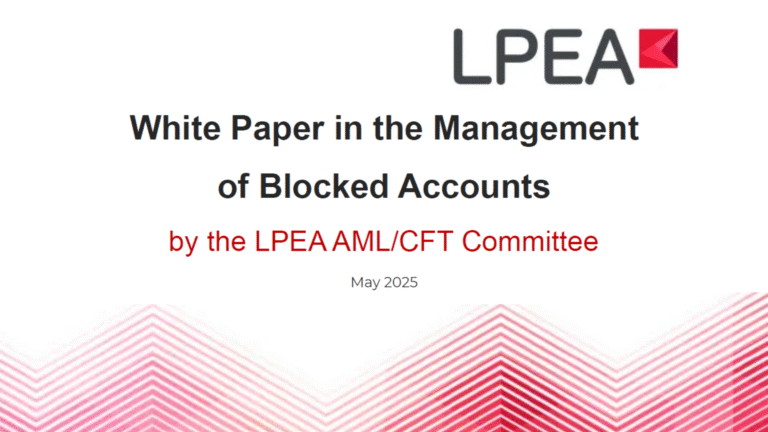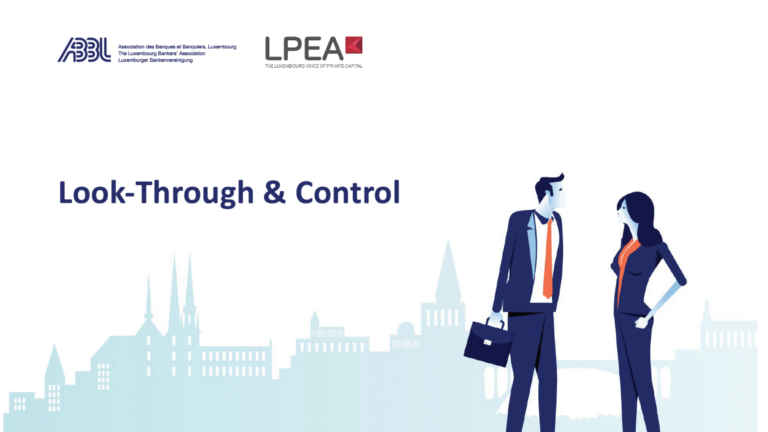Guest article: High-level overview of the AIFMD’s “asset-stripping” provisions
by Maarten Verjans
LPEA’s Market Intelligence Committee co-Chair
Partner, PwC Luxembourg
The Alternative Investment Fund Managers Directive (AIFMD) was introduced in 2011. Essentially, its purpose was to add further regulations to the management, administration and marketing of Alternative Investment Funds (AIFs) within the European Union (EU). The scope of the AIFMD is broad and captures the management and marketing of AIFs. In essence, the AIFMD applies to (i) all EU AIFMs managing and marketing AIFs in the EU and (ii) all non-EU AIFMs who either manage EU AIFs or market a non-EU or EU AIF to EU investors.
Section 2 of Chapter V of the AIFMD imposes obligations on AIFMs managing AIFs that acquire major shareholdings in, or control of, non-listed companies and issuers, such as notification of acquisition, disclosure requirements, annual reporting requirements and restrictions on asset stripping. In particular, Article 30 imposes restrictions on distributions by EU portfolio companies during the first two years following acquisition of control. These asset-stripping provisions may potentially cause deal-structuring issues and are the focus of this analysis.
More specifically, if an AIF acquires control of a non-listed EU company, for a period of 24 months following the acquisition it cannot facilitate or support any dividends, capital reduction, share redemption or share buy-backs which:
- reduce the net assets of the company below its subscribed capital plus its non-distributable reserves; or
- exceed the amount of the company’s cumulative realised profits plus other distributable reserves, less the aggregate of any cumulative losses and other non-distributable reserves.
These restrictions are subject to some limited exceptions. In particular, the asset-stripping rules do not apply if the controlling influence is acquired in a small or medium-sized company (defined as companies which employ fewer than 250 people, have an annual turnover not exceeding EUR 50m and/or annual balance sheet not exceeding EUR 43m). Exceptions also apply to vehicles involved in purchasing, holding and administrating real estate. Also, these rules do not apply to any distribution, capital reduction, share redemption or acquisition of own shares made by a non-listed company that has its registered office outside of the EU.
Practical impact
From a practical standpoint, the asset-stripping rules would be relevant if a transaction such as a dividend recapitalization, refinancing, merger or reorganisation of a portfolio company took place within two years following the date of acquisition of that company by AIFs. This is because such transactions often involve, or are shortly followed by, a distribution, capital reduction or acquisition of own shares by the portfolio company.
What is important though is that the AIFMD rules do not contain a blanket prohibition on such transactions per se. But these new asset-stripping rules should always be kept in mind by AIFMs managing AIFs and their legal advisors when planning and structuring the above-listed transactions. With the proper planning, we believe it should often be possible to structure and implement a proposed transaction without contravening the asset-striping rules. For example, a distribution of cash/assets to the shareholders should not be caught by the rules if it is implemented by means of the repayment of the shareholder loan. Thus inserting a shareholder loan into a company’s financing structure is likely to provide more flexibility than the standard equity instruments (such as preference shares).
Furthermore, there is no statutory definition of the term “capital reduction”. Thus it is currently unclear whether such term refers only to a reduction in the nominal value of a company’s registered share capital or would also include a reduction in a company’s share premium account (or similar accounts such as account 115 in Luxembourg). Therefore relevant analysis, including the legal analysis of the domestic company law of the portfolio company’s jurisdiction, is necessary.
Last but not least, the rules provide that AIFs must use their “best efforts” to prevent any prohibited transaction from taking place during the requisite period and do not provide that such obligation ceases to apply upon the private equity firm disposing of its shares in the relevant company.
Conclusion
To conclude, while we do not expect that the asset-stripping rules will limit the freedom of AIFMs managing AIFs in any significant way, it is important that such rules are kept in mind when planning and structuring an acquisition of the target. This is simply to avoid the situations where portfolio companies are prevented from carrying out a proposed transaction that, with the appropriate preparation, would have been otherwise feasible.
It is important to point out that a breach of these rules should generally have an impact on the validity of a distribution, capital reduction, share redemption or acquisition of own shares from a company law perspective. Nevertheless, failure to comply with the asset-striping provisions can result in the variation or cancellation of an authorised person’s permission to carry on regulated activities or the imposition of additional requirements. Theoretically, this could lead to the AIFM losing the required permissions to manage the AIF or have additional requirements placed on their conduct. Last but not least, it could also lead to significant reputational damage for a given AIFM.





